The 1992 Benson & Hedges World Cup was the first to feature coloured player clothing, white cricket balls and black sight-screens with a number of matches being played under floodlights.
Some of these rules were in vogue off and on, but this tournament was the first since which they were formally inducted in ODI cricket. Ever since then, the ICC has often changed and amended rules for ODIs.
Let us look at a brief history of the main rule changes starting from the World Cup 1992.
Fielding restrictions
By 1992, the standard rule of fielding restrictions mandated that only two fielders can be allowed outside the circle in the first 15 overs after which five fielders will be allowed outside the circle for the remaining overs.
This led to the famous trend of having explosive openers who could utilise the first 15 overs to score some quick runs, started by Sri Lanka with Sanath Jayasuriya and Romesh Kaluwitharana in the 1996 World Cup.
This rule was changed with the introduction of powerplays in 2005. For the first 10 overs only two fielders were allowed outside the 30-yard circle and then five overs of two powerplays each were taken by the fielding side with a maximum of three fielders outside the infield during these segments.
In 2008, two five over segments were re-named the batting and bowling powerplay which gave the batting team and the bowling team the right to decide when to take each of these respective five-over segments.
In 2011, the ICC decided that all the powerplay segments had to be completed by the 41st overs and five fielders were allowed outside the 30-yard circle for the rest of the overs.
There was another rule change in 2012 when the ICC reduced the number of players outside the 30-yard circle in non-powerplay overs to four and there were now two powerplays instead of three.
The latest rule change in 2015 did away with the batting powerplay as well and allowed 5 fielders outside the 30-yard circle from overs 41 to 50 to shift the balance in the favour of the fielding team.
Four fielders are allowed outside the circle now for overs 41 to 50 and only 2 fielders for powerplay 1 from overs 1 to 10.
The bouncer rule
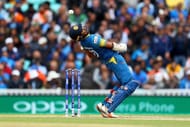
Bouncers have always been controversial in cricket as they are considered to be a deliberate ploy to injure or intimidate the batsmen. Using such tactics of course has a long history starting from the controversial bodyline series to the 70s where the West Indian quicks dominated the game.
More recently, the death of the Australian cricketer Phil Hughes after he was hit by a bouncer cast a long shadow of gloom over the game and raised questions once again over whether bouncers should be allowed.
Nevertheless, bouncers in ODI cricket have been in vogue at the time of the World Cup 1992 when one bouncer per over was allowed. In 1994, the ICC allowed two bouncers per over with a two-run penalty for exceeding the limit.
In 2001, the ICC went back to allow one bouncer per over with a one rule penalty for exceeding the limit. But the latest rule change in 2012 has allowed two bouncers once again and the run penalty has been done away with. Exceeding the limit only results in the delivery being called a no-ball.
Balls used
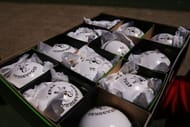
Previously, red balls were used even in ODI cricket as the players donned all whites. The introduction of coloured clothing and floodlights made it mandatory to switch to white balls as it became difficult to spot the red ball.
But the white ball underwent wear and tear besides becoming discoloured which made it difficult to spot the ball in the later stages. Therefore, the ball was usually changed after the 34th over when a used ball which was in a better condition was introduced.
The wear and tear on the ball or even the used ball allowed the faster bowlers to extract reverse swing in the later stages of the match. But this has become impossible as in 2011 a new rule was introduced which mandating using two new balls from either end from the beginning.
This usually keeps the balls hard and new now, allowing batsmen to play strokes, and making life more difficult for the bowlers.
The advent of technology
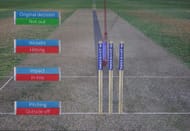
The advent of technology has changed the way cricket is played and viewed by spectators around the world. From giant-screens to Spidercams, it has also completely changed cricket broadcasting and enhanced the viewership experience.
For instance, unlike in the 90s and early 2000s, the third umpire’s decision is now no longer communicated by a red or green light but by the words ‘OUT’ or ‘NOT OUT’ distinctly displayed on the giant screens.
But technology has also made life easier for the umpires and made decision-making much more accurate. The best example is the Decision Review System or the DRS which was first introduced in ODI cricket in 2011.
It was first made mandatory and then optional which meant that it can be used in a bilateral series only if both the teams agree to use it. The various components of the DRS are ball-tacking which is used for LBW decisions, Snickometer which was later done away with, the Hawk-Eye.
The DRS has been mired in controversy since its inception with BCCI complaining time and again that technologies like the Hawk-Eye and ball-tracking are far from accurate. Currently, in ODIs, one review for each team is allowed for each innings which they get back for each successful challenge.
Rain-affected matches
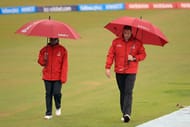
Before the World Cup 1992, the rule in case of rain interruptions was to deduct runs-per-over of the first innings for each over lost in the second innings. The new rule for the World Cup 1992 was if rain interrupted play in the second innings, the reduction in the target was to be proportionate to the lowest scoring overs of the side batting first.
That panned out disastrously when South Africa were chasing against England in the semi-final, needing 22 runs off 13 balls for victory. Rain interrupted play then and after that, the total was first revised to 22 off 7 balls and then 22 off just 1 ball, robbing South Africa of a likely chance of victory.
By 1999, the Duckworth-Lewis method was introduced which in case of a rain interruption, sets a revised target for the chasing team based on statistical calculations. The method not only takes into account the run-rate and overs bowled but also the wickets lost based on which it makes its calculation.
After the retirements of Frank Duckworth and Tony Lewis, Professor Steven Stern became the custodian of the method which was renamed in 2014 as the DLS method.
Supersub rule
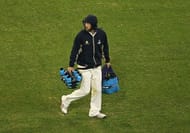
In 2005, the ICC introduced the supersub rule on a trial basis where both teams would name a 12th player who could substitute one of the players at any time during the match. Others sports already had rules for substitution in place and it was not strange that cricket chose to experiment with it.
Though the rule produced much excitement in the beginning, it soon had more naysayers than people accepting it. The main problem with the rule was since the captains had to name their teams and the supersub before the toss, this was a clear advantage to the team that won the toss.
Without knowing the result of the toss, it was often guesswork for the captains – for the team losing the toss, it became a case of 11 vs 12 because of the supersub. The experiment did not work out well and was therefore scrapped at the end of its trail.
New rules to be introduced

Following the recommendations of the MCC, the ICC Executive Committee has passed a few new rules that will take effect from October 1. A review will now not be lost for an LBW decision turned down due to the umpire’s call.
Also, once a bat is grounded, a batsman cannot be adjudged run out even if his bat is above the ground when the stumps are dismantled.
An MCC statement said, "If the bat (held by the hand) or another part of the batsman's person is grounded beyond the popping crease and this contact with the ground is subsequently lost when the wicket is put down, the batsman will be protected from being run out if he/she is running or diving and has continued forward momentum towards the stumps and beyond."
Also, poor on-field behaviour can now be penalised by umpires who can warn players in case of excessive appealing, show of dissent, or issuance of threats and physical violence. Umpires can now warn the players and send them off temporarily or even permanently.
"We felt the time had come to introduce sanctions for poor player behaviour and research told us that a growing number of umpires at grass roots level were leaving the game because of it," said John Stephenson, the MCC's head of cricket.
"Hopefully these sanctions will give them more confidence to handle disciplinary issues efficiently, whilst providing a deterrent to the players."
Brand-new app in a brand-new avatar! Download Cric Rocket for fast cricket scores, rocket flicks, super notifications and much more!
